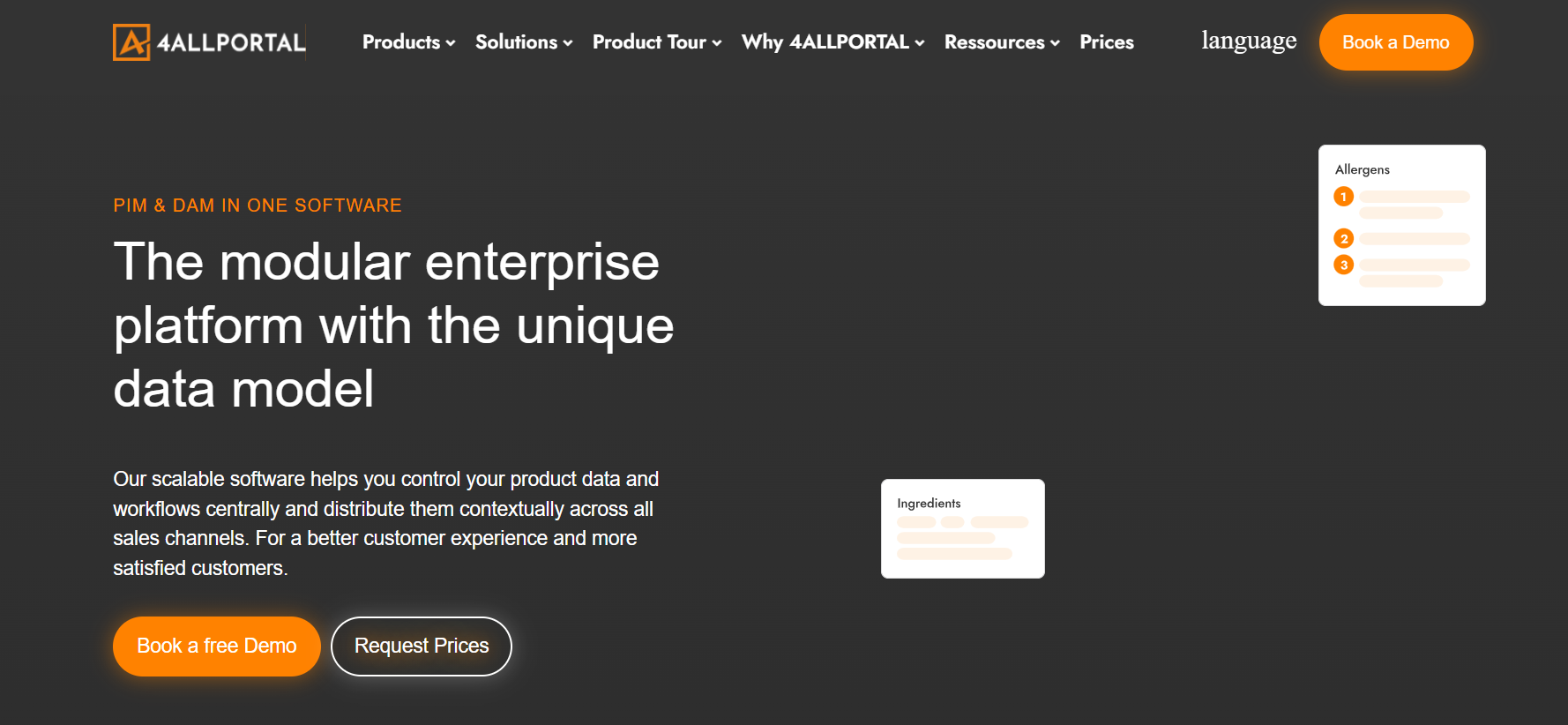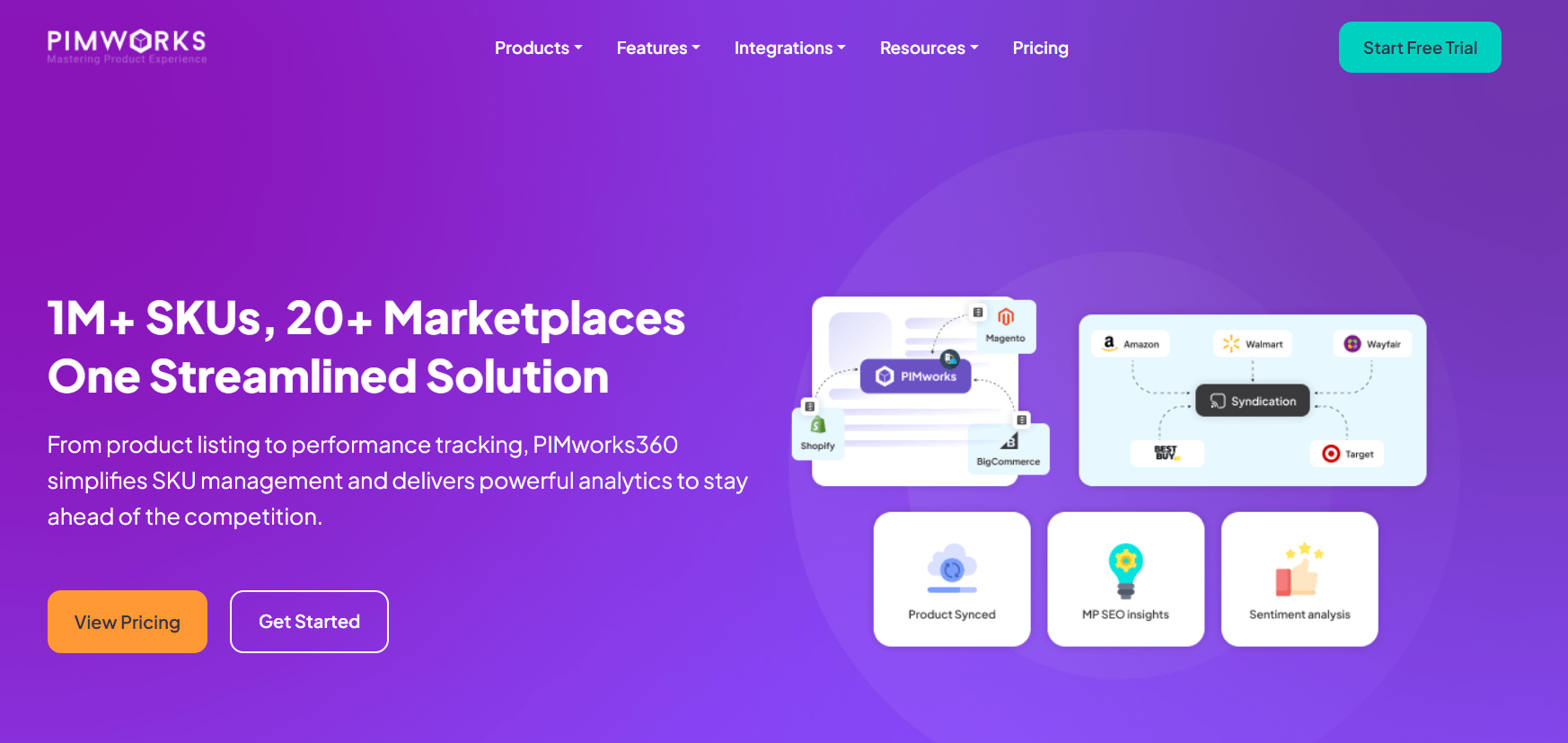Imagine you’re scrolling through your favorite online store, looking for the perfect pair of running shoes. The options are endless, the deals are tempting, and you’re about to make a purchase. But have you ever wondered who made this seamless experience possible?
Enter the world of E-commerce Product Management. These behind-the-scenes superheroes ensure your product is not only visible but also irresistible. They curate the perfect product listings, optimize the shopping experience, and make sure every detail aligns with customer needs.
Take Nike, for instance. Their online sales skyrocketed by 43% in 2020, thanks to expert product management that kept the customer experience smooth and exciting.
In this blog, we’ll dive into the fascinating role of E-commerce Product Management and how it drives success in today’s digital marketplace.
What is E-commerce Product Management?
Imagine you’re running an online store. You’ve got awesome products to sell—maybe it’s clothes, gadgets, skincare, or even handmade candles. Now, someone needs to make sure everything runs smoothly, right? That’s where e-commerce product management comes in.
Think of it like being the boss of your products. A product manager (or the person handling product management) decides:
- What products to sell
- How they should be priced
- How the product pages should look (like photos, descriptions, sizes, etc.)
- What customers might need or want next
They also keep an eye on trends, track which items are selling fast (or not at all), and make smart decisions to boost sales. It’s like being the matchmaker between your products and your customers.
In short, e-commerce product management is about making sure the right products are available, look great online, and make your customers happy, while helping your business grow.
It’s that sweet spot where creativity meets strategy.
How Product Managers Make Your Shopping Experience Better?
1. Understanding What You Want
Ever left a website because it was too confusing? PMs study customer behavior (yes, even yours!) to figure out what makes people stay and what drives them away. Their goal is to give you the best shopping experience possible.
2. Making the Website Seamless
From seamless navigation to quick-loading pages, PMs guarantee that the website operates flawlessly.
They’ve a team of experts who can resolve irritating bugs, enhance the checkout experience, and ensure you don’t leave your cart in frustration.
3. Bringing the Right People Together
Consider a PM as the quintessential team player. They collaborate with designers to enhance the site’s appearance, developers to guarantee proper functionality, and marketers to draw in more customers. They link all the pieces together so you can shop seamlessly.
4. Using Data to Improve Your Experience
Ever noticed how recommendations get better over time? That’s because PMs analyze data—what you click on, what you buy, and what you ignore to improve your experience. Their job is to make shopping easier and more enjoyable for you.
5. Launching New Features Just for You
Love new payment options or better search filters? PMs test and roll out these features to make sure buyers have a seamless shopping experience.
Why This Matters to You
An online shop can turn chaotic without an effective product manager. However, with an adept PM, you enjoy a smooth, hassle-free experience that turns shopping into an enjoyable and simple activity.
Top 10 E-commerce Product Management Software Solutions You Need to Know
Managing your online catalog shouldn’t feel like herding cats—enter these top ecommerce product management software solutions that bring order (and delight) to your product data. Whether you’re a lean startup or a global enterprise, these platforms help you centralize descriptions, images, pricing, and inventory across every channel—so your customers always see the freshest, most accurate info.
1. Plytix

A user-friendly PIM built for small and medium businesses. Plytix combines powerful product information management with an embedded DAM, so you can enrich your catalog, manage assets, and publish to multiple channels without breaking a sweat.
2. OneTimePIM

If you sell everywhere from Amazon and eBay to Facebook Shops, OneTimePIM syncs your product data in real time. No more mismatched SKUs or outdated specs; it’s multichannel magic for modern merchants.
3. Toriut

Shopify store owners, meet your new best friend. Toriut leverages AI to clean up messy spreadsheets, auto-enrich product details, and push updates live, so you spend less time on data and more time on growth.
4. ALLPORTAL

Think of 4ALLPORTAL as your single source of truth. It marries PIM and DAM in one dashboard, letting you organize product specs alongside images, videos, and marketing assets—perfect for teams that juggle high-volume catalogs.
5. Acquia DAM (Widen)

At enterprise scale, digital assets can spiral out of control. Acquia DAM (formerly Widen) shines in managing, searching, and distributing thousands of product images and rich media across global markets.
6. Akeneo PIM

Collaboration made simple. Akeneo’s task-oriented interface guides your team through data modeling, validation, and localization—so your catalog isn’t just consistent, it’s culturally tuned for every audience.
7. Syndigo

More than a PIM: it’s an insights engine. Syndigo tracks product performance, automates content syndication, and helps you optimize listings for SEO, keeping your products discoverable on Google and beyond.
8. Pimcore

Love open-source? Pimcore gives you complete control over your product information management stack. Self-host it, customize it, and scale it—no licensing fees, just limitless flexibility.
9. inRiver

Designed for B2B2C, inRiver empowers your distributors and retailers with a self-service portal. They grab exactly the specs, images, and marketing kits they need—no more back-and-forth emails.
10. PIMworks

Automation lovers, rejoice! PIMworks uses AI to enrich attributes, smartly map categories, and streamline approval workflows, so your team can launch products faster and keep listings razor-sharp.
Ready to level up your e-commerce product management game? Explore each of these platforms in this blog and discover the perfect PIM to supercharge your online store.
Use cases for E-commerce Product Management
1. Understanding Customer Needs
What it means: E-commerce PMs analyze customer behavior, feedback, and data to understand what shoppers need and how they interact with the website.
Use Case:
Imagine an online fashion store where customers keep abandoning their carts. The PM dives into analytics and discovers that shoppers are confused about sizing. To solve this, they implement a size guide and an AI-powered virtual fitting tool, reducing cart abandonment and increasing conversions.
2. Optimizing the Website for a Seamless Experience
What it means: A slow or confusing website frustrates shoppers. PMs work with developers and UX/UI designers to improve navigation, speed, and mobile-friendliness.
Use Case:
An electronics store sees many customers leaving before buying. The project manager (PM) finds that checkout is too complicated. By adding one-click checkout and multiple payment options, many people complete their purchases, resulting in a 20% increase in sales.
3. Managing Product Listings for Better Conversions

Source image: marginbusiness.com
What it means: PMs make sure product pages have clear descriptions, good images, and correct prices to build trust and increase sales.
Use Case:
A home decor store has many visitors but few buyers. The PM sees that product descriptions are unclear, and images don’t show the products well. They fix this with better descriptions, lifestyle images, and customer reviews.
4. Collaborating with Marketing, Development, and Sales Teams
What it means: PMs serve as the link connecting various teams, making sure that business objectives match with customer requirements.
Use Case:
A skincare company launches a new moisturizer. The product manager works with marketing to promote it, with developers to create a landing page, and with customer service to handle questions. E-commerce product marketing helps boost sales and brand awareness.
5. Tracking Performance & Making Data-Driven Decisions
What it means: E-commerce PMs analyze sales, customer behavior, and website data to make better decisions.
Use Case:
An online bookstore notices fewer sales. The PM checks the data and sees that customers leave after searching for books they can’t find. To fix this, they add better search filters and AI recommendations. Customers find books easily, and sales go up.
6. Launching New Features to Enhance the Shopping Experience
What it means: PMs evaluate and introduce new features to maintain the online shop’s competitiveness.
Use Case:
A grocery delivery service faces challenges in keeping customers. The PM launches a subscription plan for frequent purchasers, providing discounts and regular deliveries. This functionality boosts customer loyalty and ongoing income
7. Keeping Up with Trends and Innovation
What it means: E-commerce is continuously changing, and PMs need to stay proactive by embracing new technologies and trends.
Use Case:
A furniture shop aims to rival larger brands. The PM presents an AR (Augmented Reality) tool enabling customers to see how furniture would look in their homes before making a purchase.
Read More:- Shopify vs Etsy: A Comparison for Merchants
Challenges of E-Commerce Product Management
Managing e-commerce products is not as straightforward as it appears. From stock problems to customer demands, numerous challenges exist. Let’s explore a few typical challenges and practical instances.
1. Inventory Management Issues
- Running low on inventory can harm revenue, whereas having too much stock raises expenses.
- Example: A clothing label introduces a stylish coat, yet misjudges the level of interest. It runs out within days, resulting in annoyed customers and missed earnings
2. Keeping Product Information Accurate
- Product descriptions, images, and specifications need to be clear and up-to-date.
- Example: An electronics store lists a smartphone with the wrong battery capacity. Customers return the product, leading to negative reviews and refund costs.
3. Handling High Return Rates
- Online shoppers can’t touch or try products before buying.
- Example: A shoe retailer sees a 30% return rate because sizes vary by brand. Customers order multiple sizes, returning the ones that don’t fit.
4. Competitive Pricing Pressures
- Prices need to be competitive yet profitable.
- Example: A gadget store lists a smartwatch at $199, but a competitor drops theirs to $179. Sales decline, forcing a pricing strategy rethink.
5. SEO and Product Visibility
- Poor SEO means low traffic, resulting in fewer sales.
- Example: A skincare brand doesn’t optimize product pages for keywords like “organic face cream.” Their products rank low on search engines, leading to missed sales opportunities.
6. Managing Customer Expectations
- Customers expect fast shipping, easy returns, and top-notch service.
- Example: An online furniture store promises “2-day delivery,” but delays occur. Negative reviews pile up, damaging the brand’s reputation.
7. Fraud and Security Concerns
- Fake orders, chargebacks, and data breaches are risks.
- Example: A retailer processes an expensive order, only to discover a stolen credit card was used.
Read More: Top 10 Best Dropshipping Suppliers for Amazon
Effective E-Commerce Product Management Tips
Managing an online store requires attention to detail. Here are some key tips to ensure your products attract customers and drive sales.
1. Optimize Product Titles
- Use clear, descriptive, and keyword-rich titles.
- Example: Instead of “Laptop”, use “Dell Inspiron 15 – 16GB RAM, 512GB SSD – Silver.”
2. Write Clear Product Descriptions
- Highlight key features and benefits.
- Use bullet points for easy reading.
- Keep it concise yet informative.
3. Use High-Quality Images & Videos
- Show multiple angles of the product.
- Include zoom-in features for better clarity.
- Lifestyle images help customers visualize the product.
4. Keep Inventory Updated
- Prevent overselling by tracking stock levels.
- Enable notifications for low or out-of-stock items.
- Allow customers to sign up for restock alerts.
5. Ensure a Mobile-Friendly Experience
- Optimize for fast loading times.
- Use a responsive design.
- Simplify the checkout process.
6. Improve SEO for Better Visibility

Source Image: marginbusiness.com
- Use relevant keywords in product titles and descriptions.
- Optimize image alt texts and meta descriptions.
- Keep URLs clean and structured.
7. Encourage Customer Reviews
- Reviews build trust and influence buying decisions.
- Request feedback through follow-up emails.
- Display genuine customer reviews on product pages.
8. Offer Multiple Payment Options
- Provide credit/debit cards, digital wallets, and BNPL (Buy Now, Pay Later) options.
- More payment choices can increase conversions.
9. Reduce Cart Abandonment
- Display transparent pricing, including taxes and shipping.
- Offer guest checkout for a faster process.
- Send cart recovery emails to remind customers.
10. Monitor Product Performance
- Use analytics to track sales and customer behavior.
- Identify best-selling and underperforming products.
- Make data-driven improvements.
By following these best practices, you can enhance your e-commerce store’s efficiency, improve customer experience, and boost sales.
Final Thoughts
Ecommerce Product Management is the art of bringing together people, processes, and technology to turn raw product data into a compelling online shopping experience.
You’ve seen how the right software keeps your catalog accurate and consistent, how real-world use cases prove its power to accelerate time-to-market, and how our pro tips help you squeeze every last drop of efficiency from your workflows.
At its heart, great product management means putting yourself in your customer’s shoes—anticipating their needs, answering their questions before they’re asked, and delivering the right information at exactly the right moment. Whether you’re a lean startup or a global enterprise, the strategies and tools we’ve covered will give you a clear roadmap to:
- Centralize and enrich your product data
- Scale across channels without breaking a sweat
- Test, iterate, and optimize based on real performance metrics
Embrace these steps, and you’ll transform chaotic spreadsheets into a finely tuned engine that powers growth, drives conversions, and keeps shoppers coming back for more. Ready to take the wheel? Your journey to ecommerce excellence starts now!
FAQS About E-commerce Product Management
1. How do I add a new product to my store?
Go to your dashboard, click “Add Product,” fill in the details, upload images, and add keywords so people can find it.
2. How can I make my product listings better?
Use clear photos, write simple descriptions, add keywords, and include reviews to build trust.
3. What should I do if a product is out of stock?
Keep it visible with a “Notify Me” button so customers know it’ll be back soon.
4. How do I price my products?
Check what others charge, know your costs, and choose a fair price. Add deals sometimes to attract buyers.
5. What does product management software do?
It helps you track stock, update prices, and keep your store organized.







